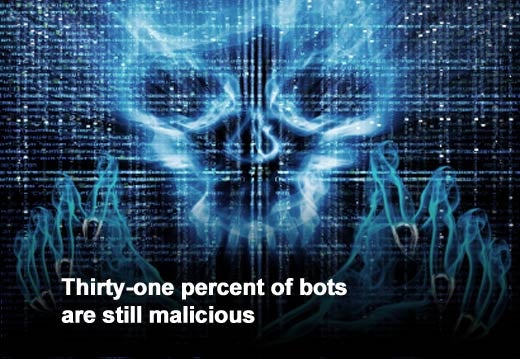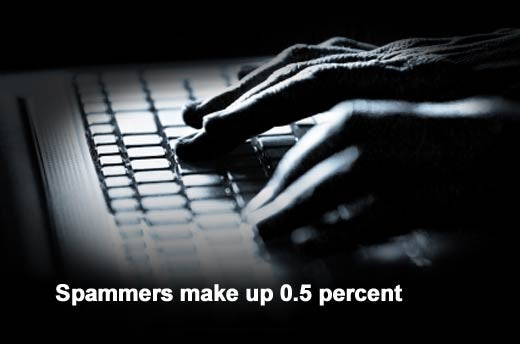Making sure your organization’s website is safe, secure and running without any malicious activity under the radar is a major concern today, especially since we live in a time when website activity is not limited to humans. Bots, short for Internet robots, are programmed to execute certain commands on the Web.
Last year, cloud-based security company Incapsula conducted a bot study collecting data from thousands of websites to find out how prevalent bots are on the Internet, which ones are good or bad, and how their activity measures up to human activity. Over a 90-day period, the company collected data from a group of 20,000 sites on its network, amounting to 1.45 billion visits. Here are the punch lines from the report.
Click through for findings from a bot study conducted by Incapsula.
Busy, busy bots
Bot traffic increased from 51 percent in 2012 to 61.5 percent of website traffic in 2013. This is a 21 percent increase in total bot traffic. The explanation for this uptick potentially means good bots are running on more re-occurring cycles as they crawl through a site. Sometimes these cycles grow shorter and shorter to allow for higher sampling rates.
What kinds of busy bots?
The bots are good and bad. Fortunately, the majority increase of bot activity is attributed to visits by good bots, such as certified agents of legitimate services, the most common being search engines.
Thirty-one percent of bots are still malicious
While this number is unchanged from 2012, some of the bot activity has moved around. There has been an increase in “other impersonators” and good bots, but a decrease in spammers and hacking tools.
Spammers make up 0.5 percent
This number is a big decrease. Spam bot traffic was 2 percent in 2012. Spammers target blogs, forums and websites to post malware/phishing links and try to divert traffic to a target website to improve its SEO rankings. The decrease in spammer activity could be credited to Google’s most recent anti-spam efforts to update the Google algorithm via Penguin 2.0 and 2.1.
Five percent are scrapers
Scrapers are after new sites, forums and often travel industry websites, looking for opportunities to steal content, pricing information and often personal information such as email addresses.
Other impersonators make up 20.5 percent
The study discovered an 8 percent increase in the activity labeled “other” — the change could be an indication of the increase in hacker activity. This group of unclassified bot visitors looks to target anyone for the purposes of gathering marketing intelligence, consuming bandwidth or causing service degradation.
Hacking tools account for 4.5 percent
Hacking tools operate to inject malware, steal data and destroy content by infiltrating websites and their content management systems, for example, credit card theft and website server hijacking — the type of attack that does not shy from headlines and gives consumers a headache over whether their data has been compromised.
DDoS evolution
Overall, Incapsula noticed that 2013 served as a lesson in the power of DDoS. The leveraging of DDoS as a form of cyber attacking is only forecasted to grow stronger. In fact, DDoS attacks are evolving from volumetric layer 3/4 attacks to highly sophisticated and damaging layer 7 multi-vector threats.
Google Analytics
Some marketers may be concerned that with such a high presence of bots they will no longer be able to trust Google Analytics to give them a true count of unique visitors to their organization’s website. This is not the case. Google Analytics is designed to specifically identify unique human visitors (not bots), so an increase in bots does not affect Google Analytics.












